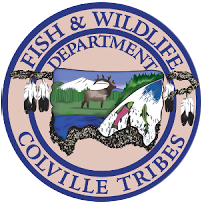Columbia River Treaty
The Columbia River Treaty between Canada and the United States focuses on power production and flood control benefits in both countries. The Confederated Tribes of the Colville Reservation (CCT) is advocating a third major criteria to be included: Ecosystem Based Functions. This takes into account fish, wildlife, habitat, water quality, and health of the river. CCT has proposed restoring fish passage and re-introduction of salmon and other species above Chief Joseph and Grand Coulee Dams.
The Upper Columbia River in both counties produced annual runs of one to three million salmon and steelhead and provided habitat for lamprey, sturgeon and other species. They were also a source of food for many other wildlife species that depended upon these annual runs, including species in the Pacific Ocean. These resources were critical to the cultures, religion, spiritual, subsistence, economy and the physical and behavioral health of our tribal members from each of the twelve tribes that now reside on the Colville Reservation.
Reservoir Operations/Flow Regime Impacts to CCT:
All Upper Columbia River (UCR) fish populations are adversely affected by the construction and operation of the Federal Columbia River Power System (FCRPS). UCR populations include both Endangered Species Act (ESA)-listed populations of UCR spring chinook (endangered), UCR steelhead (threatened), non ESA-listed summer/fall chinook and sockeye, and Species At Risk Act (SARA) listed white sturgeon.
Flow, spill, water quality (temperature and total dissolved gas (TDG), and predation all affect survival of juvenile emigrants, returning migrants, and potentially hatchery production at Chief Joseph Hatchery (CJH). Ultimately, these impact abundance of natural and hatchery origin adults returning to spawning grounds and to CTCR ceremonial and subsistence fisheries.
If CRT negotiations result in flood control or power production strategies that require more extensive drawdown of Lake Roosevelt and subsequent inflow for refill, this could impact: juvenile spring emigration which could result in greater travel time and reduced survival; extremely high TDG in Rufus Woods Reservoir; exceedance of Washington State Water Quality Criteria; existing Habitat Conservation Plans; CCT’s access to limited fishing sites below CJD; high TDG levels requires our hatchery to switch to use of ground water resources that could impact the imprinting and development of homing fidelity of fish released from CJH.
